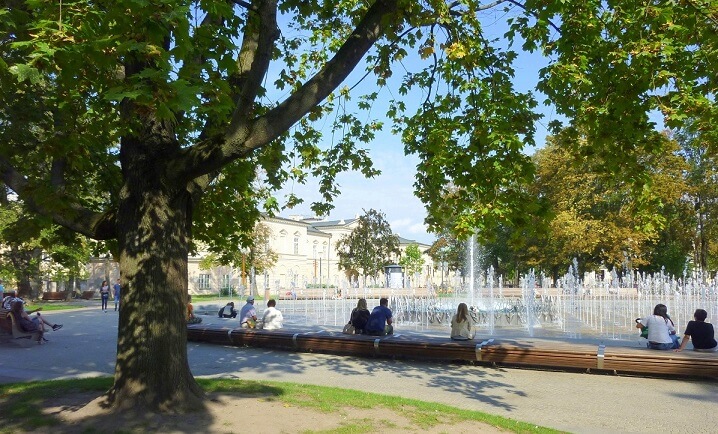City centre

The idea of creating a city garden by the western border of Lublin came from the Chief City Engineer Feliks Bieczyński. The garden in the English style was probably designed by Vernier, a well-known landscape gardener from Puławy. ...

The palace was built for Stanisław Lubomirski, the Grand Marshal of the Crown, at the turn of XVII and XVIII centuries in accordance with the design by the outstanding architect Tylman van Gameren. It was remodelled in between 1725 and 1728 under the supervision of the architect Franciszek Mayer by the order of Elżbieta Sieniawska née Lubomirska - the owner of the palace at that time. The palace was a dowry of her daughter, Zofia, and, through her marriage with August Czartoryski, it eventually became the property of the Czartoryski Family. Afterwards the building changed owners multiple ti ...

The Lubomirski Palace at Litewski Square was the property of many prominent Polish families. It is one of the most architecturally and historically interesting buildings in Lublin. In the XVI century, a Renaissance Firlej family manor house with features of defensive architecture stood in this place. In the XVII century, the property belonged to the Lubomirski family, who rebuilt the building according to the design of the outstanding Flemish architect Tylman van Gameren. It was a baroque, one-storey building with a high roof with dormer windows and corner alcoves. ...

The Reformed Franciscans were a faction of the Franciscan Order invited to Lublin by Marianna Bogucka and Helena Sapieżyna, who donated to them a property located in Żmigród. There, in the years 1663-1674, the Friars built a church and a monastery with a beautiful garden, all founded by Mikołaj Bieganowski. ...

Historic records suggest that in the 16th c. Lithuanian noblemen resided here during the proceedings of the Sejm debating on the signing of the Polish-Lithuanian Union in 1569. This significant event is commemorated with a monument shaped like an obelisk. ...

The obelisk was erected in 1826 on Stanisław Staszic’s initiative to commemorate the signing of the Polish-Lithuanian Union in Lublin in 1569 – one of the most important events in the history of Lublin. ...

A representative, ecclectic building of the Lublin theatre was erected between 1884 and 1886, according to the design by Karol Kozłowski. The building was funded thanks to the numerous public donations of and due to the initiative of the Lublin intelligentsia, industrialists, merchants, and local landowners. It’s one of the oldest theatre buildings in Poland. ...

The origins of the cemetery are connected with an ordinance of the Police Committee of Both Nations from 1792 ordering relocation of overcrowded church graveyards outside the city. The new cemetery was located on the premises bought from the Birgittine Order on the western outskirts of Lublin. The area was planted with linden trees and many locals started to call the place “the cemetery under linden trees.” The name of the street – Lipowa (Linden) Street - stems from it too. ...

This 18th-century palace was originally a noble residence. In the first half of the 19th c. it was turned by the Tsarist authorities into the seat of the Military Chief of the Lublin Governorate. ...

Located in 14 Bernardynska Street, this imposing red brick edifice of the former School of Trade was erected in the years 1906-1907 in a neo-Gothic style according to the design by Józef Holewiński and Teofil Wiśniewski. The school was founded by August Karol Vetter, a German Evangelical and Lublin industrialist well known for his charity work. ...
Page 3 of 3













